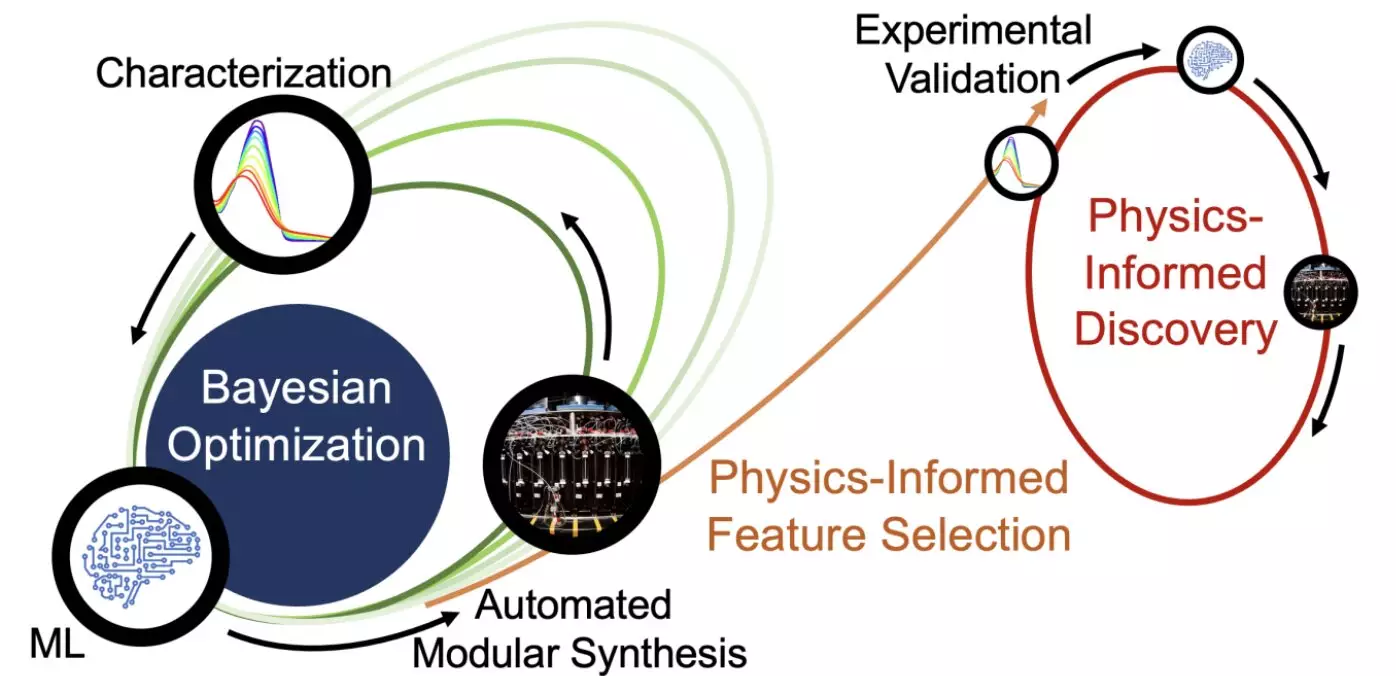Artificial Intelligence (AI) has revolutionized numerous fields, including research and development in chemical sciences. Despite its transformative potential, one of the primary challenges remains the “AI black box” phenomenon—where the decision-making process of AI systems is inscrutable, leaving researchers to wonder how conclusions are derived. Recognizing this limitation, an interdisciplinary team at the University of Illinois Urbana-Champaign embarked on a path that fused AI with automated chemical synthesis. This collaboration aimed to demystify AI’s decision-making capabilities in the context of optimizing molecules for solar energy applications.
The research team combined expertise in chemistry, engineering, and materials science to address the significant challenge of instability in light-harvesting molecules used in organic solar cells. Co-led by chemistry professor Martin Burke, chemical and biomolecular engineering professor Ying Diao, and others, this initiative sought to not only improve molecular stability but also unlock the underlying chemical principles guiding their performance. By employing a sophisticated method referred to as “closed-loop transfer,” the researchers aimed to establish a feedback mechanism where AI could iteratively refine its suggestions for chemical synthesis based on experimental data.
As highlighted by Nicholas Jackson, a member of the team, traditional AI methods often leave researchers with no actionable insights when it comes to understanding the properties driving molecular optimization. Their work focused on turning this paradigm on its head; rather than simply yielding the best-performing compounds, the team sought to expose the hidden rules that led to greater molecular stability.
The urgency of this research is rooted in the ongoing quest to enhance organic solar cells, which have yet to achieve widespread commercial viability due to structural instability when exposed to light. As Diao articulated, while organic materials present exciting applications—including flexibility and the ability to convert a broader spectrum of sunlight into usable energy—issues of photostability have thwarted progress since the 1980s.
By focusing on improving the photostability of light-harvesting molecules through a rigorous experimental framework, the researchers laid the groundwork for novel materials that could potentially outperform traditional silicon-based solar panels. Their findings indicate that not only did they create more robust molecules, but they also gleaned invaluable insights into the mechanisms underpinning molecular stability.
At the heart of this research was the closed-loop experimentation approach. Starting with AI-driven optimization, the researchers initiated cycles of synthesis and experimental validation. The AI algorithm made suggestions for new compounds, which were then synthesized and tested. Building on each round of data, the AI’s learning capabilities were enhanced, honing in on the properties of materials that contributed to increased stability.
This methodology was underpinned by the concept of modular chemistry—an innovative approach which allowed for quick synthesis of compounds that could be easily reconfigured based on the evolving requirements dictated by the AI’s feedback. Martin Burke emphasized how this synergy between AI and automation allowed for a more expansive exploration of not only structural properties but also functional traits of molecules.
Complementary to the synthesis process, other algorithms worked tirelessly to analyze the properties of the synthesized compounds. Through this dual-layer approach—rational hypotheses generation followed by experimental validation—the team could identify specific chemical features that predicted stability under light exposure. This marked a significant paradigm shift from the traditional trial-and-error methodology, providing a structured way to hypothesize and test material properties.
Once the experiments culminated, the researchers had concrete data and predictive models that could streamline future discoveries. The models transformed guesses into data-driven hypotheses that could be tested, effectively catalyzing subsequent human-led research endeavors in this realm.
A Glimpse into the Future of AI in Chemistry
Highlighting their results, the research team demonstrated that by varying solvent conditions, they could achieve up to a fourfold increase in the photostability of the newly synthesized molecules. This finding was not only a testament to their methodologies but also served as a proof of principle for what might be achievable across various material systems beyond solar cells.
Schroeder articulated a vision where researchers could interface with AI in a more intuitive manner: inputting desired chemical functions to uncover new hypotheses. This illustrates the exciting possibilities that lie ahead if interdisciplinary collaboration continues to thrive, integrating resources and expertise in innovative ways.
Through their groundbreaking work, the interdisciplinary team at the University of Illinois stands at the forefront of transforming the limitations of AI into tools for real scientific breakthroughs. Their research not only enhances our understanding of material stability in solar applications but also sets a precedent for future collaborations between AI and various scientific disciplines. As they continue to explore and innovate, the journey toward more sustainable, efficient energy solutions becomes all the more tangible.

